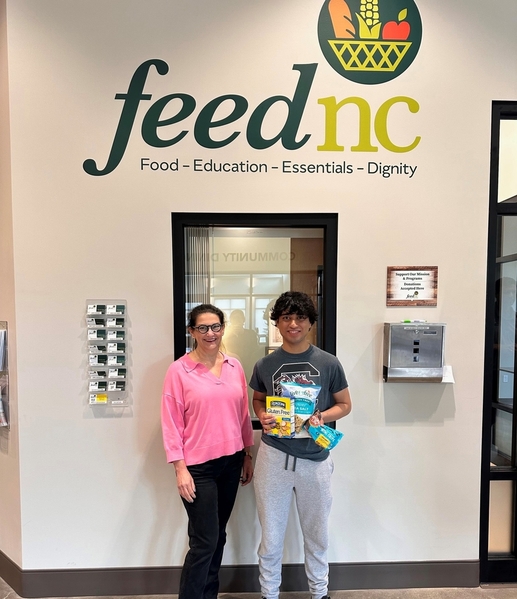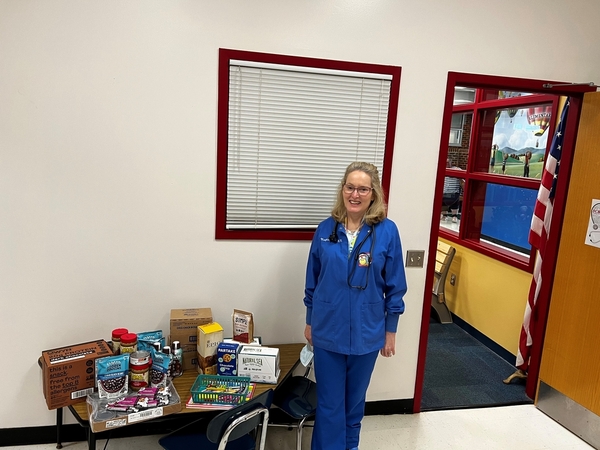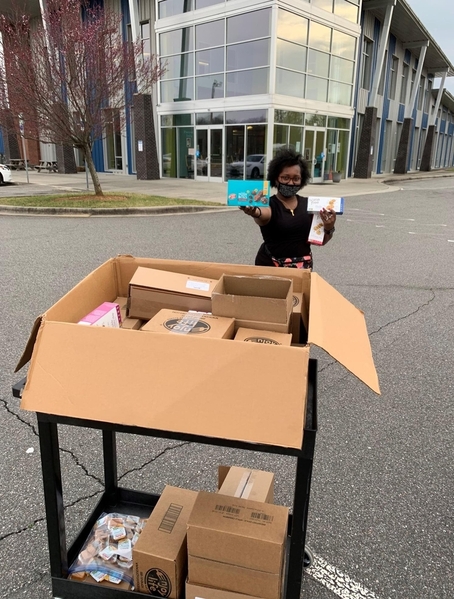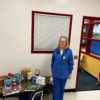Black people in the United States bear a much higher burden of food allergies than white people. Black people also report more severe food allergy reactions and more emergency room visits for food allergy reactions.1 This is why reducing food allergy disparities is a critical part of the mission of the Asthma and Allergy Foundation of America (AAFA) and its food allergy division, Kids with Food Allergies (KFA).
More than 34 million people in America are food insecure. This includes 9 million children.2 The COVID-19 pandemic impacted food security in households, especially among families with children and in communities of color. In 2021, nearly 20% of Black people faced food insecurity. That’s more than three times the rate of white households.3
What Is Food Insecurity?
Food insecurity means not having access to enough food or quality food to meet your basic needs.
Food allergy places a major economic burden on society as a whole. But that burden is different from other common childhood diseases where the health care system bears most of the costs. With a childhood food allergy, the family carries most of the cost.4 Expenses related to caring for a child with a food allergy include direct costs (such as out-of-pocket costs of medical copays and specialty foods) and indirect costs (such as lost wages and lost opportunities).
Organizations such as FOODiversity take a local approach to helping children and families living with food allergy. They offer resources for children and families who experience food insecurity but also have food allergies, celiac disease, or food intolerances. AAFA spoke with Wendy Pake, FOODiversity’s Executive Director, and Alice Luttman, a school nurse, to learn more about helping families facing both food allergy and food insecurity.
“FOODiversity serves as a central hub to cinch together resources,” Wendy said. “School nurses, food pantries, health care systems, and others can plug into FOODiversity’s solutions and serve individuals and families who otherwise might not receive the personalized support they need.”
Wendy has found that while there are many national resources about allergies, the information often doesn’t trickle down to families in need at the local level.

Founding FOODiversity was a natural fit for Wendy. She has a child who was diagnosed with multiple food allergies over two decades ago when resources and information were scarce. She saw how the COVID-19 pandemic further highlighted how families in her community may not have easy access to emergency food while living with food allergy.
“'During COVID, I saw the long lines outside the food pantries and other food distribution sites,” Wendy recalled. “I thought to myself, I wonder how someone with food allergies would access these resources?”
The answer she found was complex, especially for communities of color who are already impacted by the systemic issues of poverty. Using her personal experience and her passion to reduce health disparities, FOODiversity began to provide education and resources to local food pantries and schools. They also began to offer home delivery of allergen-safe food to households across the U.S. through FOODiversity’s Food Delivery Program.
In a recent survey, FOODiversity’s Food Delivery Program customers described the challenges they face in obtaining safe and nutritious foods:
- High costs of allergy-friendly or gluten-free food
- Deciding if the ingredients listed on a package are safe for their family
- Availability of allergen-friendly foods at food pantries, in-school and faith-based pantries, and other food providers
One of the FOODiversity school partners is located in Statesville, North Carolina. FOODiversity began working closely with the school nurses there to help provide allergen-friendly food and allergy education to families and school staff. Many of the families don’t have easy access to reliable transportation and food.
Addressing hunger is one of the many needs that school nurse, Alice Luttman, sees daily. She manages an in-school food pantry program. Most students receive a supply of food for the weekend and on school breaks.
With FOODiversity, Alice has made this program more accessible to students with food allergies. FOODiversity supplies allergy-friendly and nutrient-dense food for students in need. Along with the allergy-friendly food, FOODiversity also supplies food allergy education and recipes to families. Sending these bundles home was a great way to share information.

“It’s really hard to try to reach some of these families,” Alice said. “But, I know they are going to open up that food bag that night and see the resources and recipes.”
School nurses can also refer families to the FOODiversity Food Delivery Program. In this program, FOODiversity enrolls customers into Free From Market’s allergen-friendly online marketplace, funding each customer with a monthly shopping credit. During product selections, families can filter available products by allergen(s), cultural preference, and health concerns.

As in all FOODiversity programs, this program's process is centered on customer choice and preserving families’ dignity. The food order is delivered directly to the customers' homes, reducing the need for transportation and helping the families maintain privacy.
The organization’s impact is growing. Wendy reports that by August 2023, FOODiversity will have distributed over $90,000 worth of allergy-friendly and nutrient-dense foods to eligible families and organizations throughout the United States.
References
1. Warren, C. M., Jiang, J., & Gupta, R. S. (2020). Epidemiology and Burden of Food Allergy. Current allergy and asthma reports, 20(2), 6. https://doi.org/10.1007/s11882-020-0898-7
2. Feeding America. (2018). Understanding Hunger and Food Insecurity. Feedingamerica.org. https://www.feedingamerica.org...rica/food-insecurity
3. Feeding America. (2018). Understanding Hunger and Food Insecurity. Feedingamerica.org. https://www.feedingamerica.org...rica/food-insecurity
4. Gupta, R S , Holdford, D , Bilaver, L , Dyer, A , Holl, J L , Meltzer, D (2013) The Economic Impact of Childhood Food Allergy in the United States JAMA Pediatr. 167(11):1026–1031 doi:10 1001/jamapediatrics 2013 2376




Comments (0)